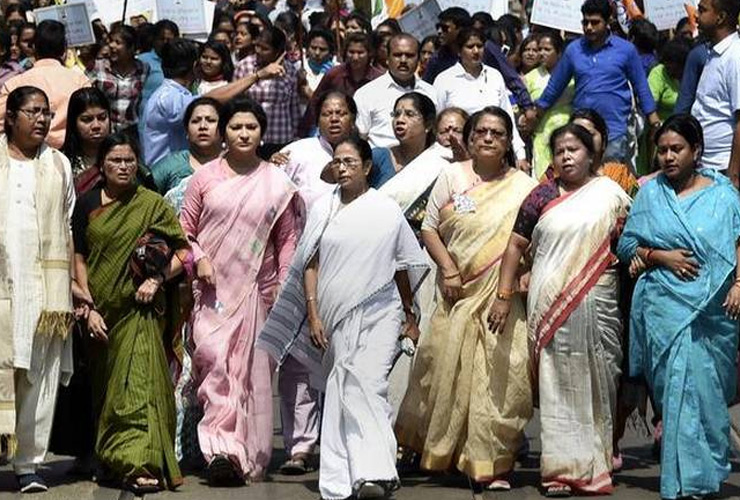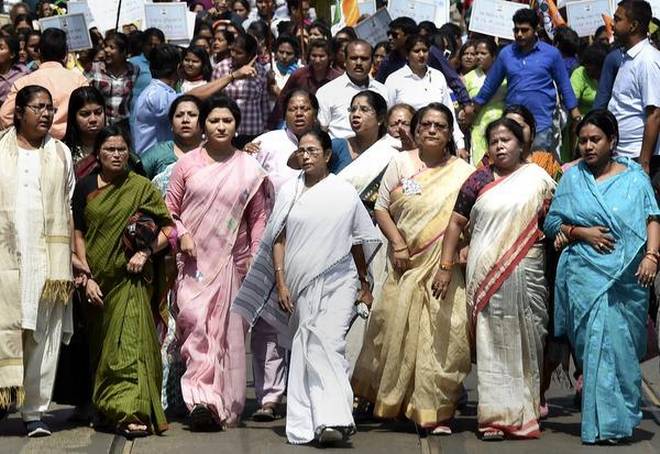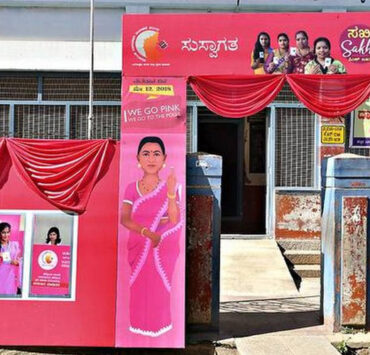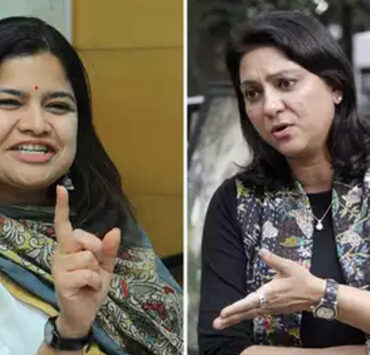
Two solid reporters don’t quote women in their ground reports from the West Bengal elections.
By Sohini Chattopadhyay
In fiction and film, there is the Bechdel test to measure the representation of women in a work. The question the Bechdel test asks is whether the work features at least one instance of two women discussing something other than a man. It is named after a cartoonist called Alison Bechdel, whose cartoon strip Dykes to Watch Out For was the first work to use this concept. Bechdel credited her friend Liz Wallace, and the writer Virginia Woolf, for the concept. Some people refer to the test as the Bechdel-Wallace test.
Is there something which is the equivalent of the Bechdel test in journalism? The idea would be to measure whether a reporter quotes at least one woman in a piece of reportage. And in the case of stories on women, such as West Bengal Chief Minister Mamata Banerjee, the test would check whether the reporter quotes at least one woman other than the subject of the story.
Can a piece of reporting be good if it fails the test? In fiction, and in film (for which the Bechdel test is most commonly used), failing the Bechdel test does not immediately mean that the work is bad. What it means is that falls short on a measure that can be reasonably argued to represent feminism—women discussing something other than a man. Sometimes, it has been argued, two women discuss how a man is failing to be feminist or a supporter of women, and this does imply the work’s feminist politics, even if it fails the basic measure of the Bechdel test.
But reportage is different—it is real-life. And if you fail to represent a minimum of women’s voices in your work, it means you have failed to report a part of real life. It is on this measure—let’s call it the Bechdel test for journalism for now—that two solid reporters fail in their ground reporting on the elections in West Bengal.
In his report, Elections 2019: Saffron Salaam in Mamata Banerjee’s West Bengal the Mint reporter Sayantan Bera does not quote a single woman other than the chief minister herself. Bera is a well-known reporter, and deservedly so: his work on agriculture and rural India for Down to Earth and now Mint, has been praised for all the right reasons. In this report, too, he does nearly everything right—he travels to Purulia in a blistering hot time in Bengal. The choice of Purulia is good—it is one of the areas in which the BJP, seen as the principal opposition in Bengal, did well in the bloodied Panchayat elections of 2018. The question of Mamata Banerjee’s popularity is indeed best asked in a place like Purulia, where a visible sentiment has arisen against her.
And yet. Bera fails to quote a single woman either from the electorate in Purulia, or among the analysts and political contenders he spoke with. His report contains 11 quotes, nine are from men, two are anonymous. These two may be women, but I have a feeling that if these were women he would have mentioned the fear women feel in speaking out.
The absence of women is especially egregious because this is the republic of Mamata Banerjee, a woman whose feminism is under-rated by Anglophones (some of the reasons for this are valid) but is formidable in its ground appeal. Some of her policies speak directly of her ‘feminism’—the Trinamool has the highest percentage of women candidates among all major parties contesting the Lok Sabha this year.

West Bengal Chief Minister Mamata Banerjee leads a ‘walk,’ organised to mark International Women’s Day in Kolkata on March 8, 2019. | Photo Credit: PTI
Another favourite reporter of mine, Shoaib Daniyal of Scroll.in, has barely passed the Bechdel test in journalism in his election season reporting in Bengal. In three reports titled, Elections 2019: In Bengal’s Malda, BJP workers are angry about defectors getting Lok Sabha tickets, Elections 2019: in North Bengal, feudalism of Congress is challenged by communalism of BJP and Trinamool, and From Kerala to Delhi, Bengal’s migrant workers have a place everywhere. Just not in Bengal Politics, Daniyal used 22 quotes and only four of these are from women. These women are two-time MP and Trinamool candidate Mausam Noor, BJP Lok Sabha candidate Sreerupa Mitra Chowdhury, and Gulbahar, the widow of Afrazul Khan. Khan was a migrant worker, who was murdered in Rajasthan, and his murder was recorded on camera and shared on social media.
In one of these three stories from Malda, Mausam Noor was the subject of the story and naturally, it was difficult to avoid having her views on the record. Presumably, Gulbahar was interviewed because of the gruesome nature of her husband’s death, and it is good that Daniyal remembers this horrible crime and follows up on it. What’s missing from his stories is the voice of the regular woman voter in Malda. This is a problem, because Mamata Banerjee is a persona that women in Bengal look up to.
I found this in my own reporting in Bengal during the 2014 Lok Sabha election, when I followed Chief Minister Banerjee on her rallies across Murshidabad, Berhampore and Jangipur. On a horribly hot Sunday afternoon in Domjur village in Murshidabad, women who had gathered to listen to her told me that Banerjee’s oratory was more entertaining than the ‘TV’ they watch at home on Sunday afternoons. Later, I noticed how Banerjee ended her address to the crowd: “I have been travelling for six days now. Today, I will go home and eat some rice. You also go home, and put the rice on the boil. It is almost evening, and you have been here a long time.” It was a remark addressed to the women in her electorate—Banerjee acknowledged the labour of women who cook at home.
I was alert to this remark because I had been speaking to the writer and critic Sumana Roy the previous day. Roy’s voice found a place in my essay: “Our women politicians speak—or at least try to speak—an utterly urban patriarchal discourse, one that kills ‘women’s speech’. I think of Mamata Banerjee as a significant game-changer in the way the political discourse in the country has been forced to become elastic.”
In truth, I did slightly better than Daniyal. I could, and should, have done much better—there are many interesting women who are political commentators in Bengal and their views would have made the essay distinct, like Sumana Roy did. I am often criticised by my contemporaries for saying that I enjoy the political writing of women reporters more—Rohini Mohan, Supriya Sharma, Anumeha Yadav, Neha Dixit—to name just a few. “What is this women-are-better spiel” is the comment I hear in response.
It’s a way of seeing, I think. A way of looking at the world. In an essay on the Asian Women’s Film Festival, the critic Trisha Gupta had phrased this question in different words—“Is there anything specific about films made by women? Why should gender be a factor in our thinking about/viewing any form of art?” Gupta received some really thoughtful answers. My favourite was this one. “Because gender does exist – just like the caste system. To say that it doesn’t is to deny its realities. If thousands of women had not become artists, political writers or philosophers, a massive part of human experience would be still underground – neither expressed, nor acknowledged,” said film editor Anupama Chandra.




